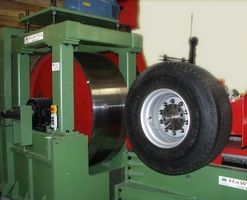Rolling resistance : the pet hate of the environmentally conscious
Low rolling resistance is often pushed forward as a selling argument following theeuropean regulations for environment protection. But what are we talking about when we talk about rolling resistance ?

Rolling resistance is the energy spent by the tyre deformation when it enters into contact with the road. It is dependent on visco-elastic properties of the rubber compound, commonly know as hysteresis
It is to be seen as only one of many forces that play against movement ( inertia, air draft...).
For a driver that wishes to curb their fuel consumption, reducing fuel consumption is key
Generally, tyres that have a high concentration in silica display a lower rolling resistance that other tyres
Other elements that may come into play:
- The weight of the wheel (wheel + tyres) : the lighter the wheel, the more energy you can expect to save.
- Robustness of the sidewalls :With rigid sidewalls, there is less tyre deformation and less fuel consumption as a result
- Road maintenance.
How do you measure rolling resistance?

Answering to very precise norms (ISO 28580), measuring rolling resistance takes place in a lab at constant temperature of 25deg celcius using differential measures with a drum or in real life conditions.
A first measurement is made with the drum in motion alone. The force required to keep the drum moving is calculated. Then, a second measurement of the force required is made with the tyre.
The last step consists in calculating the difference between the two forces: the resistance to motion. It is expressed in kg/ton.
Remember!
When you replace a worn out tyre by a brand new one, rolling resistance is increased by 20%, never mind the index of the new tyre.
Rolling resistance changes during a trip. It decreases when tyres are warm
Resistance coefficient can help understand why some drivers select imposing sizes for their tyres. The forces are split across a bigger surface, so longevity is increased.



